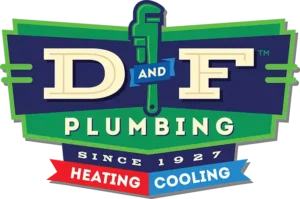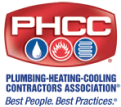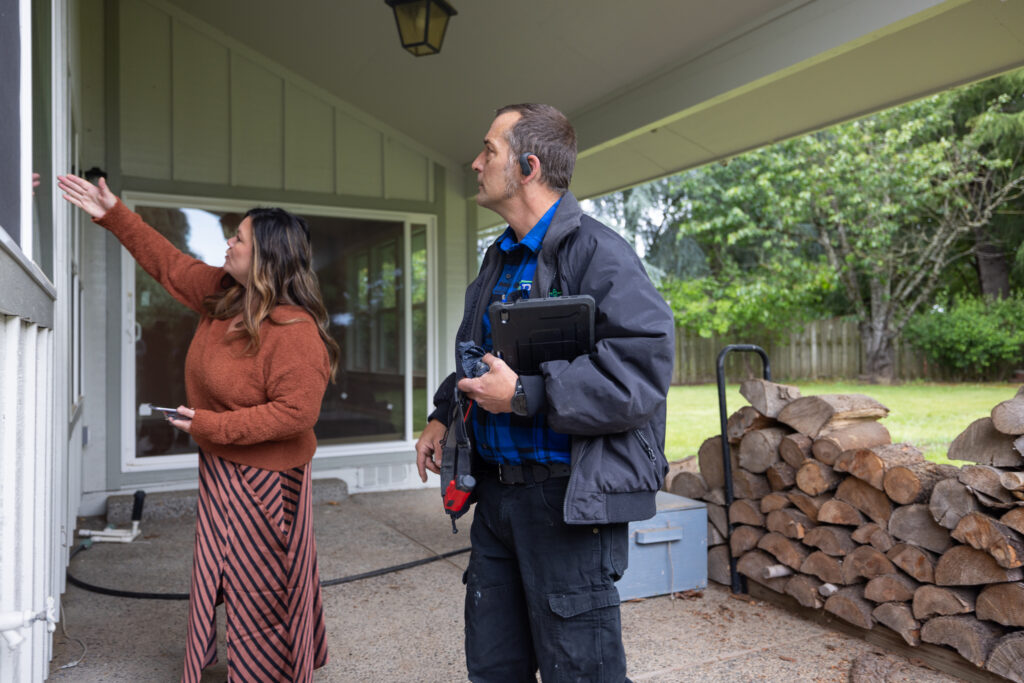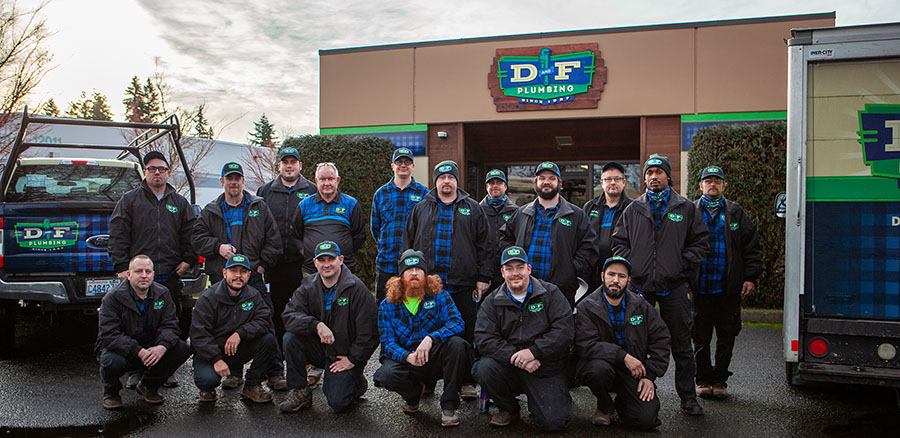The 2024 Washington wildfires have cast a significant shadow over the Pacific Northwest, heavily impacting air quality and posing serious health risks to residents. As these fires continue to burn, smoke and particulate matter spread far beyond the immediate areas of the blazes, affecting air quality across various regions, including nearby states. For individuals living in these regions, understanding the health implications of this compromised air quality and knowing how to mitigate its effects inside their homes are paramount.
Explore the multifaceted impacts of wildfire smoke on health, detailing the specific risks associated with prolonged exposure to fine particulate matter (PM2.5) and other harmful pollutants. Learn how to maintain healthy indoor air quality during such environmental crises. Finally, understand the strategies such as improving ventilation, using air purifiers effectively, and the importance of regular HVAC maintenance.
As your trusted HVAC experts, our company is dedicated to equipping you with knowledge and solutions to safeguard your home’s atmosphere, ensuring that despite external air quality challenges, your indoor environment remains safe, clean, and conducive to good health. Let’s explore these essential insights and practical steps to take during the wildfire season to protect yourself and your loved ones.
Understanding the Health Impacts of Smoke Exposure
The 2024 Washington wildfires not only scorch landscapes but also significantly deteriorate air quality through the release of smoke and ash. This smoke is a hazardous cocktail of carbon dioxide, water vapour, particulate matter, and chemicals produced by burning materials. Health risks from inhaling this polluted air range from mild irritations to severe respiratory issues.
Long-term exposure to wildfire smoke can exacerbate conditions such as asthma, bronchitis, and even lead to the development of chronic respiratory conditions. Particularly vulnerable are children, the elderly, and anyone with pre-existing health conditions. Ensuring the air inside your home is as clean as possible during these times isn’t just a comfort—it’s a critical necessity for maintaining health.
Effective Strategies for Indoor Air Quality Management
During wildfire seasons, it’s imperative to minimise the amount of smoke entering your home. Here are several strategies that our professionals recommend to keep your breathing air clean:
- Maintain a Tight Seal on Windows and Doors: Ensure all your home’s openings are sealed properly to prevent smoke infiltration. This might involve updating weather-stripping or repairing seals around windows and doors.
- Opt for Recirculating Air: Use air conditioning units set to recirculate indoor air. This helps avoid pulling in smoky outside air. Ensure your air conditioning unit is fitted with a high-quality air filter that can trap fine particulate matter.
- Air Purifiers: Deploy air purifiers with HEPA filters throughout your home. These devices are highly effective at capturing the microscopic particles in smoke that pose health risks.
- Avoid Activities That Degrade Indoor Air: Minimize activities that can add to indoor pollution levels. These include burning candles, smoking tobacco, and using wood-burning stoves.
Routine HVAC System Maintenance and Filtration
Properly maintaining your HVAC system is crucial, especially when contending with poor air quality due to wildfires. Here’s how you can ensure your HVAC system aids in keeping your indoor air clean:
- Regular Filter Replacement: Replace HVAC filters regularly. During wildfire seasons, filters may need to be replaced more frequently due to the increased levels of ash and particulates.
- System Inspections: Have your HVAC system inspected by professionals at least annually. Our technicians can ensure that your system is running efficiently and effectively, which is essential during periods of poor air quality.
- Enhanced Filters: Consider installing more robust filtration options like HEPA filters within the HVAC system. These can offer additional protection by trapping finer particles of smoke and ash.
Adopting Air Purifying Technologies
In addition to the typical filtration offered by HVAC systems, there are advanced technologies available that can further purify the air in your home:
- Activated Carbon Filters: These filters excel at capturing volatile organic compounds (VOCs) and odours from the air, which are common byproducts of wildfire smoke.
- UV Air Purifiers: These purifiers use ultraviolet light to kill or neutralise microorganisms. While they don’t remove particulate matter, they can improve overall air quality by reducing pathogens.
- Electronic Air Cleaners: These cleaners use an electrical charge to attract and trap pollutants, effectively removing a wide range of particle sizes, including those found in smoke.
By integrating these technologies, you can significantly improve your home’s defence against the invasive pollutants brought about by wildfire smoke.
Educating Yourself and Staying Informed
Knowledge is a powerful tool. Keeping informed about the air quality indexes (AQI) in your area helps you make knowledgeable decisions about when to stay indoors and when it’s safe to open windows. Monitoring local news for updates on wildfire progression also helps you stay prepared and take action if needed.
Our team is committed to helping you navigate these challenging times with the right tools and knowledge. By understanding and utilising these strategies, you can help safeguard your health and the health of your loved ones from the effects of wildfire smoke.
Prioritizing Indoor Air Purification
In the face of escalating wildfire smoke issues, prioritising the enhancement of indoor air quality is essential. Our experts emphasise the integration of superior filtration systems within homes to trap and reduce the circulation of harmful particulates.
1. Advanced Filtration Techniques
Utilising HEPA (High-Efficiency Particulate Air) filters in your HVAC systems and air purifiers can significantly improve your indoor air quality. These filters are capable of trapping particulate matter as small as 0.3 microns, which includes the fine particles present in wildfire smoke.
For homes in areas frequently affected by wildfires, combining HEPA filters with activated carbon filters ensures a dual-action approach to air purification. Activated carbon filters excel in absorbing smoke and other odours, providing a cleaner breathing environment.
2. Regular Maintenance of Air Quality Systems
The efficacy of air purifiers and HVAC systems heavily depends on regular maintenance. This includes routine checks and replacing filters every three months or as recommended by the manufacturer during high smoke periods. Our technicians provide professional maintenance services, ensuring that your systems function efficiently when you most need them.
Creating an Indoor Safe Haven
Keeping indoor environments safe and breathable during wildfire seasons involves more than just mechanical filtration. It’s also about adapting lifestyle practices to reduce indoor air pollution.
1. Seal and Protect
Ensuring that your home is well-sealed against external smoke infiltration is crucial. Check the integrity of seals around doors and windows and make necessary repairs. Use draught excluders and weather-stripping to enhance the seal and keep smoke out.
2. Minimize Indoor Pollution Sources
During wildfire episodes, it’s advisable to minimise activities that contribute to indoor air pollution. Avoid using candles, tobacco products, and wood stoves, as these can exacerbate indoor air pollution levels.
Streamlined Air Quality Monitoring
Staying informed about the air quality in your area allows you to make informed decisions about when to close up your home or when it’s safe to ventilate.
1. Use of Smart Air Quality Monitors
Installing a smart air quality monitor provides real-time updates on your home’s indoor air conditions. These devices can detect a range of pollutants and offer advice on when to run air purifiers or adjust your HVAC system, ensuring optimal air quality throughout the day.
2. Consultation with Our Experts
Our team is always ready to provide guidance on the best practices for monitoring and improving air quality. Whether you need advice on the right air purifier or how to use your HVAC system during wildfires effectively, we are here to help.
Education and Community Engagement
Our commitment extends beyond providing services; we believe in empowering our community through education on air quality issues. Hosting workshops and seminars on indoor air quality management during wildfire seasons plays a critical part in community health.
We actively participate in local health initiatives and collaborate with other entities to broaden the reach of accurate, helpful information. These engagements help to foster a well-informed community that is better prepared to deal with the challenges posed by wildfire smoke.
Keeping Ahead with the Latest Technology
Advancements in air purification technology and HVAC systems continue to emerge, offering new ways to enhance indoor air quality. We stay abreast of these developments to ensure that our customers benefit from the very latest in air purification and filtration technologies.
Incorporating IoT-enabled devices and smarter filtration techniques is part of our commitment to delivering top-tier service. These technologies not only enhance air quality but also improve the overall energy efficiency of air management systems within your home.
With the strategy and solutions outlined, preparing for and managing the air quality during wildfire seasons can be effectively achieved. Our focus remains on safeguarding the respiratory health and overall well-being of our community through superior service and informed guidance.
Improving Ventilation and Reducing Smoke Infiltration
In response to the continued threat of wildfire smoke in Washington, enhancing ventilation systems while sealing homes to minimise smoke intrusion is critical.
1. Enhanced Sealing Techniques
Simply closing windows and doors may not be sufficient to keep smoke at bay. It’s vital to improve the sealing around these potential entry points. Weather stripping and caulking can seal gaps in windows and doors effectively. For added protection, consider installing draft stoppers at the base of doors leading outside.
2. Benefits of Advanced Ventilation Systems
Ventilation is crucial in maintaining good indoor air quality. Systems such as Energy Recovery Ventilators (ERVs) or Heat Recovery Ventilators (HRVs) can provide essential controlled ventilation without sacrificing air quality. These systems help to expel indoor pollutants and bring in fresh air from outside, filtering it to remove particulates before it enters your home.
Maintaining Indoor Air Quality during Emergencies
During wildfire season, maintaining indoor air quality becomes a challenge yet remains a priority to protect health and comfort.
1. Use of Air Purifying Equipment
Portable air purifiers with HEPA filters can be strategically placed in frequently used areas of the home to clean the air of particulate matter effectively. For households with vulnerable individuals, such as the elderly or those with respiratory conditions, these purifiers can provide significant relief.
2. It’s About More than Just Smoke
While smoke is a primary concern during wildfires, other pollutants can also degrade indoor air quality. Volatile Organic Compounds (VOCs) from household cleaning agents, paints, and other chemicals can accumulate, particularly when homes are sealed against smoke. Using air purifiers that also feature activated carbon can help reduce these chemicals significantly.
Educating the Community on Air Quality Management
Engagement and education are crucial, especially as the incidence of wildfires in Washington continues to rise.
1. Workshops and Seminars
Our experts are dedicated to providing workshops that help homeowners understand air quality challenges and the best strategies for maintaining a healthy indoor environment. These sessions cover everything from the use of air purifiers to the importance of regular HVAC maintenance.
2. Collaborative Community Efforts
By partnering with local health initiatives and other organizations, we play an active role in spreading crucial information and resources that can assist in preparing for and dealing with compromised air quality.
Staying Informed through Technology
Technological advancements have made monitoring and managing air quality easier and more effective.
1. Smart Home Integration
Modern air quality monitors can now be integrated with smart home systems, providing real-time updates and enabling automatic adjustments to HVAC systems, optimising the indoor environment based on the current air quality.
2. Leveraging Online Resources
Reliable online resources for tracking air quality and wildfire progression are indispensable during the fire season. Regularly consulting these platforms helps in making informed decisions about when to increase filtration or create a tighter seal around the home.
Protecting against Long-Term Health Effects
While acute exposure to wildfire smoke is a significant concern, the long-term health effects also need consideration.
1. Chronic Exposure Considerations
Prolonged exposure to poor air quality can lead to chronic respiratory conditions and cardiovascular issues. It is crucial not only to address air quality issues during wildfire events but also to ensure that homes continue to have good air quality year-round.
2. Recommendations for Sustained Health
To protect against long-term effects, we recommend regular health screenings for those in high-risk areas and continual air quality management in homes to ensure that any potential problems are addressed promptly.
Embrace a Breath of Fresh Air with Expert Solutions
In facing the challenges posed by wildfire smoke, the importance of safeguarding indoor air quality cannot be overstated. By implementing these strategies, residents in wildfire-prone areas can better protect themselves from the immediate and lasting impacts of smoke exposure. Staying proactive about indoor air quality ensures that our communities remain resilient and healthy, even in the face of increasing wildfire activities each year.
At D&F Plumbing, Heating and Cooling, we understand the complexities of maintaining pure indoor air during smoke events and beyond. Our experienced professionals are adept at installing advanced ventilation solutions, ensuring that your home isn’t just a shelter but a sanctuary against outdoor pollutants. Remember, it’s not just about reacting to poor air conditions but building resilience against them. Contact us today to learn more about our comprehensive HVAC services in Portland, OR, and breathe easier knowing your home’s air quality is in expert hands!

















